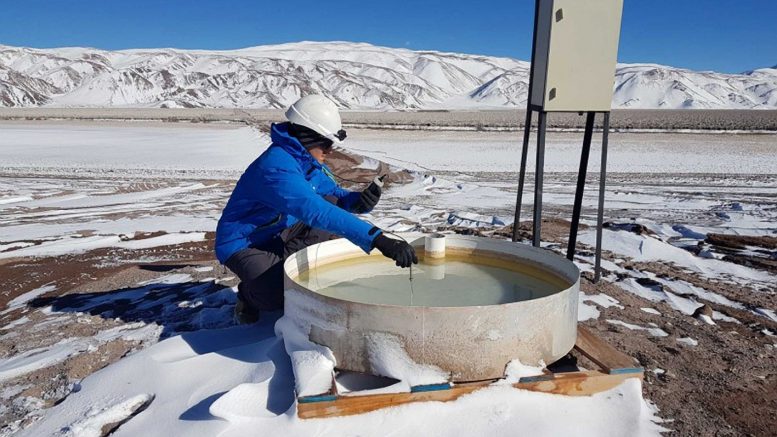Lithium extraction techniques increasingly under ESG scrutiny – report

According to Fitch, ESG-conscious investment principles will assume centre stage and change the way lithium producers conduct business.
More than half of global lithium reserves are within what is referred to as the ‘Lithium Triangle,’ covering parts of Argentina, Chile and Bolivia. Historically, extraction within the salt flats of the lithium triangle has been substantially water-intensive, requiring about two million litres of water per tonne of lithium extracted.
This presents a substantial risk of water shortages for future agricultural needs in a region that already has a reputation as one of the driest places on the globe, Fitch says.
Automakers with operations inside the EU have already started to invest in more sustainable extraction techniques, placing pressure on lithium producers
Added to water scarcity in key lithium-producing regions, the threat of pollution of local water supplies will result in a persisting risk for social unrest and a rising risk of opposition to lithium operations and new projects.
Large evaporation pools, which generally sit for over a year, can leak toxic chemicals and contaminate bodies of water. Fitch cites two examples.
In Tibet, a chemical leak from the Ganzizhou Rongda lithium mine in 2016 damaged the ecosystem within the Liqi River and resulted in the mass death of fish. The local community, in turn, protested lithium mining. Within the lithium triangle, Indigenous communities have spoken out against lithium extraction.
In October 2019, indigenous Chileans from the Atacama salt flats blocked access to local lithium operations, supporting protests against social inequality and protesting lithium mining’s environmental impacts within their community.
“We expect the consideration of local communities to become a non-negotiable in lithium developments in the medium-to-long term, as ESG requirements for financing tighten,” according to Fitch. “This could present challenges to countries looking to expand lithium output over our forecast period amid the growth in the sector. For example, the Fernández administration in Argentina aims to raise annual lithium carbonate output from 40,000 tonnes at present to over 230,000 tonnes by the end of 2022.”
As a part of the European Green Deal, the European Commission proposed in December 2020 that beginning July 2024, only rechargeable electric vehicles (EVs) and industrial batteries with declared carbon footprints will be permitted into the EU. ESG investing is fast becoming mainstream. In November 2020, the Partnership for Carbon Accounting Financials rolled out the Global Green House Gas Accounting and Reporting Standard for the financial industry, bringing emissions associated with banks and investors lending and investment activities to the forefront of public attention.
Automakers with operations inside the EU have already started to invest in more sustainable extraction techniques, placing pressure on lithium producers.
In January, BMW announced that it had commissioned a study from the University of Alaska Anchorage and the University of Massachusetts Amherst to analyse the water use of various lithium mining techniques in South America. The study’s results are expected to be available in the first quarter of 2022 and will increase transparency regarding the environmental impact of different technologies.
Existing lithium producers are already responding to the emerging concerns about their extraction techniques. Chilean State-owned lithium producer Sociedad Quimica y Minera (SQM) has committed to reducing freshwater use. In October 2020, SQM pledged to decrease freshwater use in the Salar de Atacama salt flat by 30% immediately compared with 2019 levels and by 50% by 2030.
Meanwhile, new players advance extraction techniques that hold the potential to upend lithium supply. Lake Resources and Standard Lithium have developed direct lithium extraction (DLE) techniques that claim to reduce the environmental impact compared with traditional evaporation methods.
“We expect DLE technology to dominate the future lithium mining sector within geothermal brines in Europe and the UK, as well as within the salt flats of South America,” said Fitch.
Meanwhile, Fitch posits geothermal lithium extraction techniques to rise in popularity among Western consumers. Geothermal lithium extraction has a much lower carbon footprint than both hard rock and brine extraction methods, as well as reduced water usage.
In turn, zero-carbon lithium products will sell at a premium compared with hard rock mine output.
While geothermal lithium extraction will dominate lithium production in the future, the extraction technique that will be the second most popular will depend on technological readiness and the demand for lithium carbonate versus lithium hydroxide.




